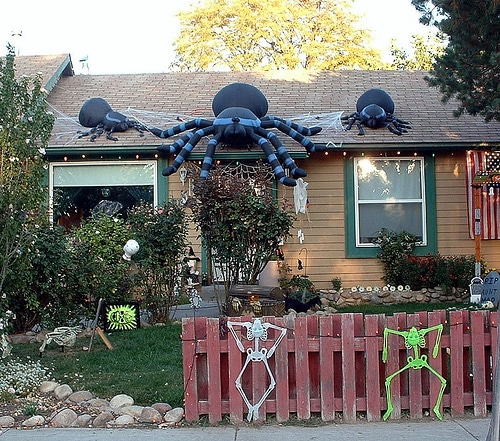
Want a Better Way to Get Rid of Waste? Turn It Into Energy

It has been estimated that the average person generates 4 1/2 pounds of waste each and every day. Unfortunately not all, or even a large part, of that waste is recycled. Most of it ends up in landfills. This is despite the fact that reports show close to 75% of all solid waste can be recycled. But what can we do about it? The first thing that needs to be done is we need to change how people think about waste, how they view their own generated waste, and what they do with the waste they generate. Much of this can be done on a grass roots level, but let’s face it…unless the cities, states and government also take a vested interest in reducing waste and finding a viable solution to get rid of the large volumes of waste generated, little will be done on a broad scale. The solution? Opt for a better way to get rid of waste by turning it into energy.
There are a number of groups, businesses, and even countries who have decided to curb their love of landfills and are opting for a better method of “disposing” of their waste. Take Sweden for example. Sweden has gotten tired of simply filling their landfills with waste that could be used to generate energy. So, they did something about it. Now Sweden recycles the items that can be reused and it turns the rest of the country’s waste into energy. In fact, between their own waste and the waste they are importing (yes, importing) from other nearby countries, they are generating enough energy to power a quarter of a million homes. Take a look:
Another example of turning waste into energy is Microsoft’s experimental waste-to-energy data center. Microsoft is looking to capture the biogas generated from a local wastewater treatment facility and use that to power its cloud services. According to reports, they are hoping to start generating power a little later this year. Microsoft also plans to redirect any excess power back to the wastewater treatment facility in order to help them offset their own electrical expenses.
Food waste to energy plans are beginning to take off as well. In Wales, the UK’s leading food waste anaerobic digestion company, Biogen, has just won its third contract to build and operate another food waste to energy plant. This particular plant will collect food waste from homes and businesses in a designated area around the plant, and will be used to generate and return renewable energy back to the grid. Estimates show the plant will be able to generated enough energy to power at least 2,000 homes a year. As an added bonus, the plant will be able to produce a biofertilizer for local farmlands.
Even California is interested in getting involved in the waste-to-energy movement, which would be a very good thing considering the fact that over the last decade Californians have generated enough waste to fill the Pasadena Rose Bowl more than 2000 times. Ugh. I’d say it is a good time to get California’s so-called “BioEnergy Action Plan” into motion.
Waste Management has been ahead of the game, so to speak, in that they have been actively turning waste-to-energy since early in the 70s. In fact, you might be surprised to learn that their Wheelabrator facilities have converted over a 145 million tons of solid waste into 75 billion kWh of energy. How much is that? Well, it’s enough to power an estimated 650,000 homes every single day. Check out the following video showing one example of how Waste Management’s Wheelabrator is now powering an entire county in the state of Florida.
When it all comes down to it, by reducing our overall consumption, reusing or recycling those items that have more life in them (so to speak), and getting rid of our waste by turning it into energy, we can not only reduce the amount of waste piling up in landfills, but become a little more sustainable in the long run. A good idea, don’t you think?
First image by US Army Corps of Engineers / Flickr Creative Commons
9 Comments
-
Randy Sober
I was doing some research and stumbled across your article. Thank you for your insight and for sharing.
-
Steve
Isn’t it just amazing how a country like Sweden is considering their waste problems! Respect to their government and the society. They are a pure example of that how every country should take an action about their waste management. What about Microsoft’s idea? Let’s hope there will be more companies like them, thinking about the environmental problems. Recycling and waste management are some of the ways to resolve problems like global warming, air pollution and electricity shortage. Today is very important to think green. Societies, governments and companies should work together If we want a healthier and cleaner planet.
-
-
-
Michael Lee
It is crazy to think that 75% of waste can be recycled. I never knew how important rubbish management is. It would be interesting if we did achieve 100% recycle rates.
-
Lauren Klesser
Waste turned into energy sounds so awesome! Mother Earth would definitely love that!
Will be checking out the tips how. Thanks for the informative write-up by the way. -



Rose Woods
The future belongs to that idea! We have to make our living greener and renewable energy made from garbage is the perfect solution for many of our problems!